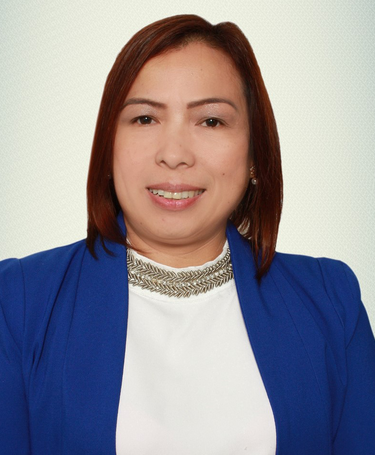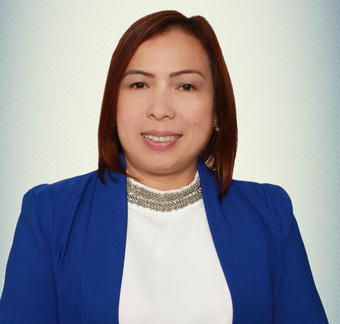
A client-centric quality culture
Progress indicator
Arlene Ollano-Aguilar, BSc Eng, Six Sigma, IRCA-certified QMS Lead Auditor and Quality Manager for Faithful+Gould, member of the SNC-Lavalin Group, talks about how a quality approach can help a company improve its operations and adapt to clients’ demands.
1. What role does a company’s quality strategy play in ensuring the company stays client centric?
The organisation’s quality strategy helps to embed client-centricity into the company’s DNA. Through the effective implementation of quality strategy, client-centricity becomes natural to everyone [in the company].
Quality objectives are created to support the business strategy, not to burden the people or the business operations. They pull everyone’s effort into common goals, unified purpose and single direction.
Part of the implementation of a quality strategy is to understand who the key clients are and how they fit into our strategy as a business. We need to understand where the risks sits within the business to be able to develop our assurance programme. For example, we know that digital tools are a brand new service, so we should include all of our projects that have a digital reporting tool deployed into our audit programme.
For instance, a risk register records what risks might affect the business, who controls them, and when these risks are mitigated. However, if this register is carried-out manually, auditors can suggest automated ways of doing the register, since this will mean efficiency and automation of a key control. Auditors can review the audit results and look at where efficiency and ‘better ways of doing things’ can make a difference; ultimately saving money and time for the company, and providing better value for our clients.
A quality strategy helps to mould people’s minds and the company culture into being truly client centric.
2. What tools or methods can be used to ensure that the organisation’s policies and processes reflect the clients’ needs?
Being client centric means seeing things from the clients’ side of the table. Understanding what they need and what their challenges are. We use appropriate tools and methods to establish clients’ needs and expectations by regularly conducting the risk-based audits to ensure that the organisation reflects the clients’ needs and expectations.
Tool:
- Client Relationship Management (CRM).
Methods:
- Growing our digital offering.
- Recruiting excellent people.
- Expanding our business outside UK/Europe.
- Identifying who the interested parties are and their requirements.
- Identifying and regularly monitoring the internal and external issues that can affect our organisation’s services.
3. In your opinion, how can the CQI Competency Framework help a company minimise operational risks?
By effectively adopting the CQI Competency Framework, a company is able to:
- protect its reputation – avoiding the potentially catastrophic consequences of getting things wrong;
- enhance its reputation – optimising the operational effectiveness to maximise the value for their customers and stakeholders;
- improve the profitability/value for money – optimising operational efficiency by eliminating unnecessary cost and waste;
- transform at pace – driving change through insights, strategies and improvement activities.
The Competency Framework covers everything, starting from the Governance to Leadership, to Assurance to Improvement, and up to the Context of the organisation. Hence, by implementing the Competency Framework, the organisation can assure it will deliver these important parameters: expected quality, within the stipulated time, and within the specified cost.
All of these are possible. How?
Within the aspect of Governance, the clients’ requirements will surely be met. Within the Leadership, the company can rest assured that people and culture are above the processes and structure. Within the Assurance aspect, the framework:
- identifies the risk failures and non-conformances, as well as ensuring that the effective actions are taken to resolve any issues, as well as identifying the root causes;
- ensures that the management intent is reflected within the policies, processes, plans and procedures and that they are effectively implemented;
- ensures that the supplier management process is properly implemented;
- supports the organisation in evaluating any problems and risks, and develop solutions;
- ensures that the solutions are managed to closure.
In conclusion, the CQI Competency Framework helps the company minimise its operational risks.
4. Why are quality professionals considered ‘collaborators and agents of change’ within an organisation?
Quality professionals are considered collaborators because we work with colleagues and leaders to embed an open culture, where everyone is open to suggest improvements and use innovation to enhance services. We work with leaders and managers to develop the culture of excellence and improvement.
We are also agents of change, as we transform processes, behaviour and culture. Making change happen by inspiring and motivating others. Leading others by example.
5. You are a certified Six Sigma Yellow Belt. What are the main benefits a Six Sigma approach can bring to a construction company?
The Engineering, Procurement and Construction (EPC) industry is profoundly driven by stiff competition and robust performance. Most often, companies are hiring experts to develop and establish control measures to ensure that certain quality standards are met. Undoubtedly, effective implementation of standards has helped to improve the quality in the industry. However, there are some instances when they become a source of risk on their own, as they can lead to financial stress for some organisations. Six Sigma-based processes have the ability to measure and monitor the level of risk in the process and analyse it by the use of statistical data.
It is important that the project scope and objective are established, monitored and improved. This can be achieved through the use of the Six Sigma’s Supplier Input Process Customer (SIPOC) Model, which basically identifies the important input/output combinations that best define the project’s objective.
The SIPOC model breaks down a Six Sigma project, giving a better understanding on the objectives of the project at hand and:
- gives a better understanding of the competitors;
- a better understanding of the market rates and trends;
- identifies the major wastes and deviations;
- identifies the potential delays;
- identifies defects and reworks;
- controls and improves the quality of work;
- compiles overall benefits and investments;
- outlines and identifies the challenges involved in the project and ways to overcome them;
- improves safety of the work environment;
- validates the results after the completion of the project.
When the key players in a project have a better understanding of it, they get a better definition of their respective tasks and align their goals with that of the project. Through the implementation of Six Sigma-based processes, any organisation would be able to deliver the expected quality, within the specified time and stipulated budget. This is how Six Sigma is best utilised within the construction industry.
6. The construction industry is changing with new technological demands. Are quality professionals in the sector keeping up to speed?
The answer is a resounding “yes!”
The voice of the clients and their choices drive digital disruption. To keep pace with the rampant digital disruption, the businesses must increase their focus on Digital Quality Assurance. Quality professionals could add value to this digital world by providing assurance and confidence to the clients, as well as to the top management that the digital technologies they are using are really working in the way they are designed to be. Hence, the traditional quality assurance is not dying; on the contrary, the exciting digital quality journey is just about to begin. To implement effectively the quality roles, it is a must for quality professionals to keep abreast with the changes and become a bit more technical.
About the author:

Arlene Ollano-Aguilar has a Bachelor in Science in Electrical Engineering, she's an expert in Six Sigma and a QMS Lead Auditor, IRCA, UK. She is a Quality Manager for Faithful+Gould, member of the SNC-Lavalin Group.
Quality World

Get the latest news, interviews and features on quality in our industry leading magazine.
